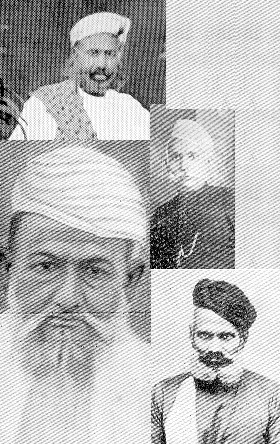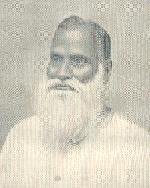 |
|
Malkapur Ginning & Pressing Factory |

Commerce and Business:
Raja
Sahib had congregated greater part of his wealth mostly through trade. His
inclination in the day to-day business affair had become strong during his
father’s time and after his death, he was more and more engrossed in business.
With time his instinct became perfect. Despite his mild educational background,
this Banker of Central Province, owed his success as much to his penetrating
business acumen, as to his patient and steady hard work.
Raja Sahib
inherited these qualities from his father. He had special knowledge of the
commodities found in different part of the country. He would not venture into
any business hastily without going through the pros and cons involved in the
proposal. It was always for him to weigh chances of gain and loss in mind and
then take the initiative.
 |
|
Malkapur Ginning & Pressing Factory |
Jamshedji Tata, the man behind bringing about industrial revolution
in the country, was only contemplating the idea by the time Raja Sahib had
turned his vision into reality. The foundation of Jubbulpore Mills called 'The
Raja Gokuldas Mills’ and the 'Perfect Pottery Works’, were laid at such time
when the industry was not popular in the country. By the time Jamshedji Tata
became the first Indian to own a car, Raja Sahib had the credit of embarking
into the new field of industrialisation by opening a chain of ginning and
pressing factories at Gotegaon, Gadarwara, Piparia, Kareli, Harda, Khandwa.
Kalmeshwar, Wardha, Hinganghat, Malkapur, Amraoti and Katol in C.P and Berar, at
Banda and Etawa in U.P and Multan in Punjab.
Shops, as the offices were called at that time, had already been opened
in C.P and rest of India in his father's time, but he was not satisfied with
these, accordingly new shops were opened in other parts of country. Raja Sahib
extended his business to Bombay, Calcutta and Rangoon. The shops at
Bombay,
Calcutta and Rangoon were considered to be one of the biggest of the respective
market. His shops were under the charge of agents, yet all were kept under his
supervision. He used to be on tour for 9 months in a year. He supervised his
work personally and never depended on others. The main objective behind strict
surveillance was that every servant remembered the sword of Domocles always
hanging over his head.

|
|
Raja Saheb’s Head Munims |
His staff was transferred from one place to another. No one was allowed
to stay for more than 4-5 years at one place. Whenever he recruited, the new
gumasta or the munim had to under go a period of probation. He was attached to
each and every person who served under him. Among his most trusted munims
included Munim Bachoolal, Nanagram, Kanhiyalal and Punamchand. The former two
served Raja Sahib’s family for about 50 years while the latter two had served
for three generations.

|
|
Mr Jiwanchandra Mukerji |
Besides these four, he had great trust upon Munim Amarchand an agent in
Jubbulpore, Munim Kanjimal, Munim Jethmal, Munim Hazarimal, Munim Rikhadas and
Munim Banwarilal. Among the chief advisors of Raja Sahib may be mentioned the
Russel brothers - retired Superintendents of the office of the Commissioner
Jubbulpore, Babu Srishchandra Roy Choudhary, a leading legal practitioner of
Jubbulpore, and Rai Bahadur Babu Ambikacharan De, a prominent lawyer of
Narsinghpur.
He used to see Srishchandra Roy Choudhary
almost every day, and Babu Ambikacharan De frequently came to Jubbulpore.
He used to listen to the advice given by his advisors and acted upon them. But
E. A. Russel was treated with special consideration.
Formation
of Central Province:
In 1820, the territories were combined and placed under an Agent to the
Governor General for the ‘Sagar and Narmada territory’ with headquarters at
Jubbulpore. In 1852 the general administration of these territories was once
again entrusted to the government of North Western province, under which it
continued upto the formation of the Central Province in 1861.
As latel as 1853, when the Great Trignometerical Survey of India had
been underway for almost a century, Sir Erkskine Perry addressing the Bombay
branch of the Royal Asiatic Society wrote, ‘At present the Gondwana, the high
lands and jungles comprise such a large tract of unexplored country that they
form quite as oasis in our map.’
In 1861 this central tract of highland and jungles, with its unknown
history, its unexplored resources and its strange world of wild tribes, became a
separate division of British India, under the name of ‘Central Provinces’,
by the union of Sagar and Narbada Territories with the Nagpur province. Thus the
Central Province, commonly known as CP, was formed in the year 1861.
The CP territory was divided into 5 divisions which were further
divided into districts:-
|
S.No |
Division |
Districts |
|
1 |
Nagpor (Nagpur) |
Nagpor, Bhandara, Chanda, Wardha, Balaghat |
|
2 |
Jubbulpore (Jabalpur) |
Jubbulpore & Saugor |
|
3 |
Narmada |
Betul, Chhindwara, Hoshangabad, Narsingpur |
|
4 |
Nimar |
Nimar |
|
5 |
Chattisgarh |
Raipur, Sambalpur, Bilaspur & Upper Godavari |
The administrative staff consisted of four commissioners, nineteen Deputy Commissioner. In every district there were two more sub division, the district management of each being entrusted to a native called tehsildar.
Raja Sahib and Agriculture:
Despite the fact that he was the man behind bringing about industrial
revolution in the Central Province, he still remained a man close to
agriculture. Over the period, he added many villages to his estate and took
special interest in malguzari work. Besides holding hundreds of villages in the
single district of Jubbulpore, he possessed many estates in CP and UP (Uttar
Pradesh).
Malguzars were middlemen. During the later period of the Gond rule, the
ruler himself retained large portions of the territory, which were generally
managed on leases, at first directly granted to the actual cultivators, and
later through Malguzars. Thus, during this period the malguzars did not own the
land but only were lessees who were allowed to sublease the land on behalf of
the rulers. With the passage of time, during the British Rule, malguzars
received the recognition of proprietary rights under the settlement of 1863. The
ruling government of the time recognised fixed rights, claims and interests, and
eliminated interference by the officer of Government. So, the malguzars became
owners of the land who could either lease it or do agriculture on it, and had to
pay tax to the British government.
The following lines, quoted frequently by Raja Sahib, reveal his wisdom
on agriculture: “Cultivation is best when the farmer himself ploughs the land,
is second best when he merely attends to look over the work of his subordinates,
but an absentee farmer who asks, ‘Where have you ploughed today?’ soon parts
with his land.”